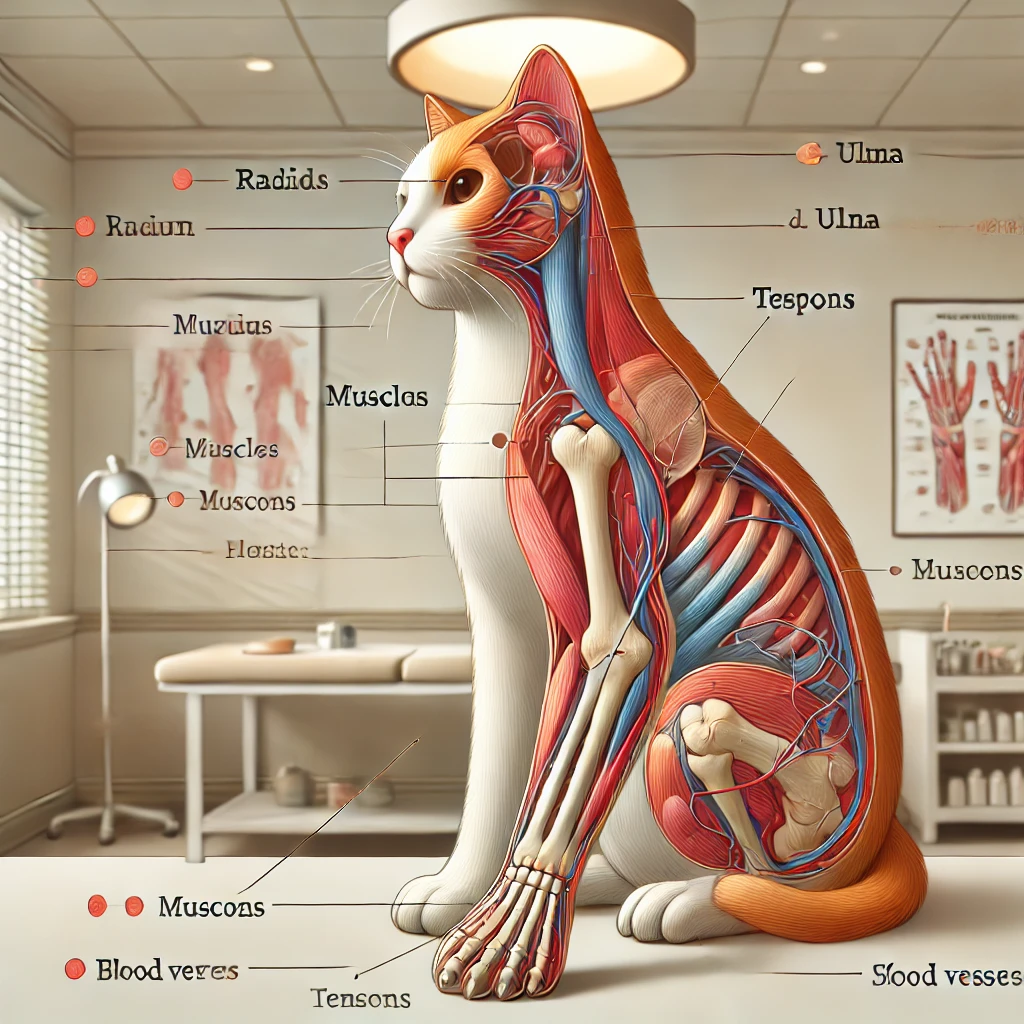Comprehensive Guide to Cat Bump After Radius Break : Causes & Care
“Having comprehensive knowledge about a cat bump after break radius ensures your feline’s complete recuperation. Let’s dive deeper into this comprehensive guide for cat owners.”
The Anatomy of a Cat’s Radius and Why It Is Prone to Injury
Together with the ulna, the radius forms the principal structural support of the forelimb. This relatively thin bone bears the weight of the body while absorbing shock during movement. Cats’ activities, such as jumping and climbing, place significant stress on the radius.
The interconnected muscles, tendons, and blood vessels complicate the healing process. Any imbalance during recovery can result in imperfections, such as lumps forming during healing.
Long-standing Causes of Bumps Following Radius Fractures
Overproduction of Callus
Sometimes the body can produce an overabundance of bone callus, especially in the younger cat with a faster metabolism. This may result in a more noticeable bump. The excess bone usually resolves over time, but this can take weeks or even years.
Crisis on Skin and Scar Tissue
Abnormal scar tissue formation can occur due to surgical incisions or trauma from the initial injury. This can form a visible and palpable bump adjacent to the fracture site, even if the bone heals appropriately.
Underlying Health Conditions
Some medical conditions like osteoporosis or metabolic bone disease can disrupt the healing process. These problems can lead to incorrect bone development or insufficient callous formation so that some clear irregularities are visible.

A Cat Bump After Break Radius: Long-Term Effects
Aesthetic Considerations
While a chronic bump may not be physically threatening, it can change the look of the appendage.
Mobility Problems
Occasionally, a constant lump may limit the movement of the joint or be uncomfortable.
Psychological Effects
Cats are emotionally responsive beings. If the bump is painful to your cat, he or she might suffer stress-related symptoms like hiding or not being as active.
Complete Home Care for Radius Fracture Recovery
Nutritional Healing
Good nutrients are key to protecting bones. Add these to your cat’s diet:
- Calcium: Found in foods like dairy products and fish, calcium supports strong bone regeneration.
- Phosphorus: Aids in both bone and tissue healing and is in meat and eggs.
- Vitamin D: Helps absorb calcium and is essential for healing.
- Omega-3 Fatty Acids: Work to decrease inflammation and facilitate functioning of the body at its best.
Enhancing Comfort
With these changes, you can have an environment conducive to recovery:
- Make use of the best orthopedic pet beds for better limb support.
- Provide quiet areas where they can rest away from domestic noise and activity.
- Add temporary ramps to minimize jumping and climbing.
Managing Stress and Anxiety
Stress can slow recovery, so take measures to keep your cat calm:
- Invest in pheromone sprays or diffusers.
- Once the vet gives the green light, engage your cat in light, interactive play to help lift their spirits.

Advanced Treatment Options
Bone Remodeling Surgery
These bumps can also be corrected, if due to a simple alignment or malunion, by a specialized surgical procedure and restore limb function.
Laser Therapy
Laser therapy is a non-invasive alternative for reducing swelling, increasing circulation, and promoting healing of the soft tissues.
Hydrotherapy
Hydrotherapy is essentially controlled exercising performed in water, decreasing strain on the limb while facilitating mobility and circulation. It is especially useful in cases where the bumps make movement difficult.
Timeline for Healing
Weeks 1–4: Acute Healing Phase
- Look for signs of infection or complications.
Weeks 5–8: Callus Formation Phase
- Initiate restricted activity under veterinarians’ instructions.
- Keep track of any bumps that are forming and how big and how textured they are.
Weeks 9–12: Remodeling Phase
- Increase supervised activity.
- If any bumps remain, talk to your vet about them.

FAQs About Cat Bump After Radius Break
How do I know if the bump is getting worse?
Watch for any signs, like growing in size, discoloration, or warmth around the bump. All of these could be a sign of inflammation or infection.
Do bumps happen more with older cats?
Older cats may be slower to heal and more likely to have complications like malunion that leads to bumps, yes.
The bump feels hard. Is this normal?
A hard bump is typically a bone callus, which is a normal part of the healing process. Soft or lumpy bumps, however, should be checked out by a vet.
Is it possible to exercise the bump away?
Gentle, vet-approved exercise is all that can help. Pushing too hard could exacerbate the problem.
What to do if a kitten bites or scratches the bump?
Use an E-collar (Elizabethan collar) to prevent further irritation and some pain management therapy with your vet.
The Emotional Toll of Looking After a Cat With an Injury
It is an emotional roller-coaster riding with your pet from injury to recovery. But having all the information and taking action makes all the difference in the world. Just remember, your patience and caring will make all the difference in your kitty’s recovery and comfort.
Creating a Safer Tomorrow for Your Cat
Once your cat has healed, the key is to prevent the same injury from happening:
- Secure windows to prevent high falls.
- Be around outside play to prevent accidents.
- Offer enriching play opportunities inside to reduce the likelihood of dangerous behaviors.
Call to Action
The second phase of recovery from a radius fracture also involves managing several concerns, including a cat bump after a break radius, which can be a challenging experience. But you don’t have to go through it alone. If you are looking for more practical advice, check the expert articles and resources available at Pet Care Heave. Let’s make sure your furry best friend gets the best care possible!
